This is a preprint.
Outcome of H5N1 clade 2.3.4.4b virus infection in calves and lactating cows
- PMID: 39149352
- PMCID: PMC11326275
- DOI: 10.1101/2024.08.09.607272
Outcome of H5N1 clade 2.3.4.4b virus infection in calves and lactating cows
Abstract
In March 2024, highly pathogenic avian influenza virus (HPAIV) clade 2.3.4.4b H5N1 infections in dairy cows were first reported from Texas, USA. Rapid dissemination to more than 190 farms in 13 states followed. Here, we provide results of two independent clade 2.3.4.4b experimental infection studies evaluating (i) oronasal susceptibility and transmission in calves to a US H5N1 bovine isolate genotype B3.13 (H5N1 B3.13) and (ii) susceptibility of lactating cows following direct mammary gland inoculation of either H5N1 B3.13 or a current EU H5N1 wild bird isolate genotype euDG (H5N1 euDG). Inoculation of the calves resulted in moderate nasal replication and shedding with no severe clinical signs or transmission to sentinel calves. In dairy cows, infection resulted in no nasal shedding, but severe acute mammary gland infection with necrotizing mastitis and high fever was observed for both H5N1 genotypes/strains. Milk production was rapidly and drastically reduced and the physical condition of the cows was severely compromised. Virus titers in milk rapidly peaked at 108 TCID50/mL, but systemic infection did not ensue. Notably, adaptive mutation PB2 E627K emerged after intramammary replication of H5N1 euDG. Our data suggest that in addition to H5N1 B3.13, other HPAIV H5N1 strains have the potential to replicate in the udder of cows and that milk and milking procedures, rather than respiratory spread, are likely the primary routes of H5N1 transmission between cattle.
Conflict of interest statement
Competing interests The J.A.R. laboratory received support from Tonix Pharmaceuticals, Genus plc, Xing Technologies, and Zoetis, outside of the reported work. J.A.R. is inventor on patents and patent applications on the use of antivirals and vaccines for the treatment and prevention of virus infections, owned by Kansas State University. The other authors declare no competing interests.
Figures


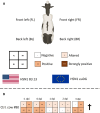
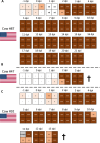
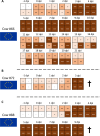

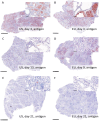


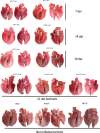
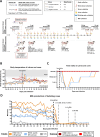

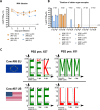


Similar articles
-
H5N1 clade 2.3.4.4b dynamics in experimentally infected calves and cows.Nature. 2025 Jan;637(8047):903-912. doi: 10.1038/s41586-024-08063-y. Epub 2024 Sep 25. Nature. 2025. PMID: 39321846 Free PMC article.
-
Dairy cows develop protective immunity against reinfection with bovine H5N1 influenza virus.Nat Microbiol. 2025 Jun;10(6):1366-1377. doi: 10.1038/s41564-025-01998-6. Epub 2025 Apr 17. Nat Microbiol. 2025. PMID: 40247094 Free PMC article.
-
Dairy cows inoculated with highly pathogenic avian influenza virus H5N1.Nature. 2025 Jan;637(8047):913-920. doi: 10.1038/s41586-024-08166-6. Epub 2024 Oct 15. Nature. 2025. PMID: 39406346 Free PMC article.
-
An Update on Highly Pathogenic Avian Influenza A(H5N1) Virus, Clade 2.3.4.4b.J Infect Dis. 2024 Sep 23;230(3):533-542. doi: 10.1093/infdis/jiae379. J Infect Dis. 2024. PMID: 39283944 Review.
-
The genetics of highly pathogenic avian influenza viruses of subtype H5 in Germany, 2006-2020.Transbound Emerg Dis. 2021 May;68(3):1136-1150. doi: 10.1111/tbed.13843. Epub 2020 Sep 29. Transbound Emerg Dis. 2021. PMID: 32964686 Review.
Cited by
-
Rapid risk assessment to address emerging concerns of HPAI in raw and pasteurized milk.PLoS One. 2025 Jun 4;20(6):e0322948. doi: 10.1371/journal.pone.0322948. eCollection 2025. PLoS One. 2025. PMID: 40465792 Free PMC article.
References
-
- (CDC), C. f. D. C. a. P. Technical Report: June 2023 Highly Pathogenic Avian Influenza A(H5N1) Viruses, <https://www.cdc.gov/bird-flu/php/technical-report/h5n1-070723.html?CDC_A...> (2023).
-
- (WHO), W. H. O. The panzootic spread of highly pathogenic avian influenza H5N1 sublineage 2.3.4.4b: a critical appraisal of One Health preparedness and prevention, <https://www.who.int/publications/m/item/the-panzootic-spread-of-highly-p...> (2023). - PubMed
-
- Bevins S. N. et al. Intercontinental Movement of Highly Pathogenic Avian Influenza A(H5N1) Clade 2.3.4.4 Virus to the United States, 2021. Emerg Infect Dis 28, 1006–1011 (2022). https://doi.org:10.3201/eid2805.220318 - DOI - PMC - PubMed
-
- Baechlein C. et al. Neurotropic Highly Pathogenic Avian Influenza A(H5N1) Virus in Red Foxes, Northern Germany. Emerg Infect Dis 29, 2509–2512 (2023). https://doi.org:10.3201/eid2912.230938 - DOI - PMC - PubMed
-
- Plaza P. I., Gamarra-Toledo V., Rodriguez Eugui J., Rosciano N. & Lambertucci S. A. Pacific and Atlantic sea lion mortality caused by highly pathogenic Avian Influenza A(H5N1) in South America. Travel Med Infect Dis 59, 102712 (2024). https://doi.org:10.1016/j.tmaid.2024.102712 - DOI - PubMed
Publication types
Grants and funding
LinkOut - more resources
Full Text Sources
